
TCL 20 Pro 5G Review: If future phones are built like this, TCL has a bright future in the market
TCL 20 Pro 5G
£499Pros
- Incredibly crisp display boosted by TCL's Nxtvision software wizardry
- Fast 5G performance
- High quality (mono) speaker
- Headphone jack, IR blaster and wireless charging
- Qi wireless charging a welcome addition
Cons
- Slow wired phone charging by modern standards
- Wi-Fi speed may limit the potential of the device for certain tasks
- Limited avenues to buy the phone
- Too early to know about timely software updates
TCL’s flagship handset for 2021 brings a lot to the table, but does it all combine to offer a good value solution for hungry mid-range buyers?

The TCL 20 Pro 5G is the top-of-the-range phone from TCL, priced at under £500, but despite not offering a £1000+ model like many rivals, it has still worked hard to ensure every key aspect of the device performs well.
If you’ve never considered a TCL mobile before, or possibly never even heard of the company before, read on to find out more.
Design & Build
The TCL 20 Pro 5G is not a small phone, and a near 6.7-inch display might not be for all tastes, but given one of the most impressive features is the display (see below), it makes sense for it to be large enough to fully immerse yourself in the experience of looking at photos, playing a game, or watching video.
The AMOLED display is curved at the sides, and on the other side are four cameras lined up to fit within the darker coloured bar that runs along the edge of the phone. Unlike many phones on sale today, the cameras do not protrude from the casing, but the LED lamp does slightly.

Shortcut key 
Power and volume
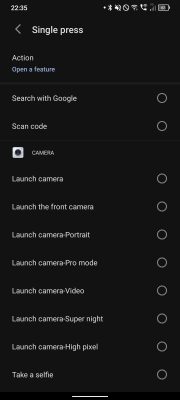
Looking down from the top you’ll see a 3.5mm headphone port and an Infrared IR-blaster (capable of replicating many individual remote controls), volume and power buttons on the right, a USB-C connector and downward firing speaker at the base, and then on the left a user-customisable button that can be set to do just about anything you want.
For example, you aren’t limited to simply opening an app, and can set it to perform specific tasks and functions. For example, you could open the camera in a particular mode, take a photo immediately – and much more. A double tap can be set to something else, which in my case is a toggle to turn the torch mode on and off.
The phone comes with a fully transparent protective case, which fits snugly and will prevent nasty scratches from the very moment you unbox it and put it on. Other cases can be purchased separately, but it is perfectly good to get you started even if it will likely yellow with age.

Display & Audio
So now we move on to the display. It’s stunning, and possibly one of the nicest I’ve seen on any phone – and certainly not on a sub-£500 device. It has bright, vivid colours (which you can tone down if you prefer) and a crispness that belies the fact it only has a resolution of 1080×2400 pixels. It’s bright too, which is particularly important on bright, sunny days outdoors.
Nxtvision is an important part of the phone, offering a number of enhancements to get the most from the screen, including turning SDR to HDR by artificially adding more colours.
You have a large choice of presets, including automatic enhancement of image contrast and sharpness, and also tweaking the colour profile (which can adjust to the surrounding light automatically), including an advanced manual mode that lets you tweak things further.
The enhancements extend to video playback and gaming, and even the integrated gallery app can further enhance stored photos you view on the phone itself (it’s worth noting that this is just what you see on the display, so other people you share content with will see the original version).
There are also different themes, along with a very customisable always-on display that even lets you scribble your own artwork if you don’t like the many presets, or select photos to display on the standby screen. You can set this to be on all of the time, or just at selected times of the day.
Discovering the phone has only mono sound was a bit of a let down, but the single speaker is of a very high standard and has plenty of punch at all levels, making it ideal for video calling, speakerphone calls, listening to music, or watching a film.
If you’re hankering for stereo sound, you can hook up speakers and headphones via the headphone jack, USB-C port, or wirelessly over Bluetooth.
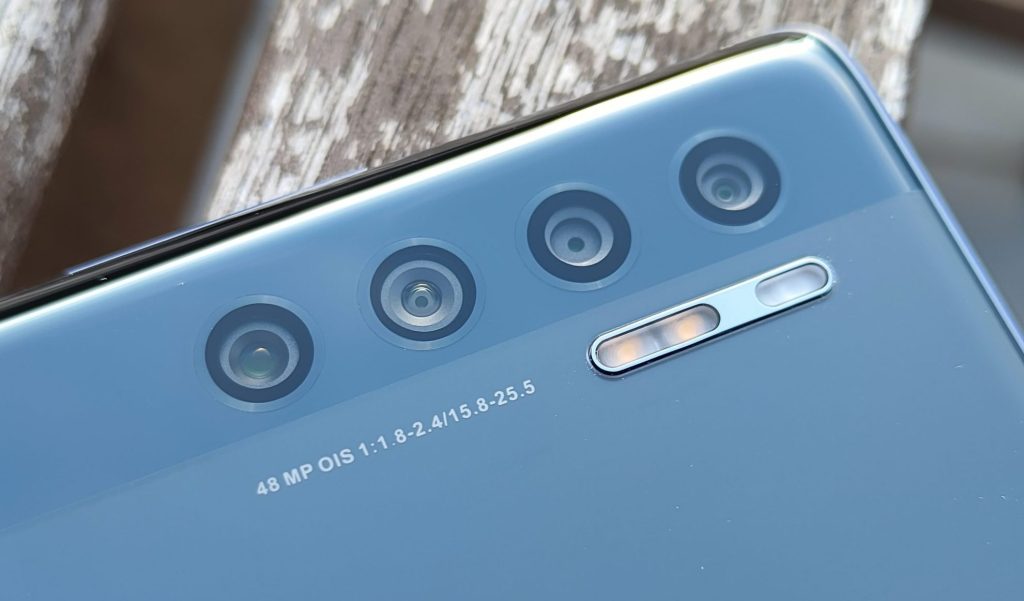
Camera
The TCL 50 Pro 5G consists of the following quad camera setup on the rear:
- 48MP primary camera, f/1.8 with OIS and video at 4K 30fps.
- 16MP ultra wide camera, f/2.4 and also 4K 30fps.
- 2MP macro camera
- 2MP depth camera
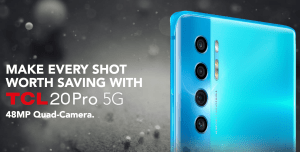
On the front, positioned in the centre at the top, is a 32-megapixel selfie camera, which can also capture at 4K 30fps.
I won’t comment much on the 2-megapixel image sensors, as these are pretty much pointless (certainly the macro camera), but for the main two cameras the image quality was excellent – including low-light photos, which captured plenty of detail and didn’t get blurred despite the longer exposure time (OIS clearly helps here).
The Sony IMX582 sensor features in lots of mid-range handsets, from a range of manufacturers, and I can see why when it is clearly an excellent quality sensor.
I did notice that images taken of scenery containing leafy trees and grass can look particularly green when viewed on-screen if you have all the display enhancements enabled, but when viewed elsewhere (such as someone you’ve shared a photo with) the saturation will be more colour accurate. Given there are lots of settings, you may have to work a bit to find the best combination, and it’s fun experimenting. Some people love saturation, others don’t – and the TCL 20 Pro 5G can be adapted to suit all preferences.
Video recording is smooth, and optical stabilisation is welcomed. Without a dedicated telephoto camera, you’re limited on the zoom potential, but with 0.6, 1 and 2x modes all producing good results (it can be pushed to 10x with digital zoom), you’re covered for the most common situations.
Taking photos of bright lights (e.g. the sun or street lights) can cause quite a bit of flaring, but for the most part you can reduce the impact by moving the camera around, or perhaps actually using the effect for artistic purposes.
Photo Gallery

Performance
The Qualcomm Snapdragon 750G proved to be pretty powerful (Qualcomm states it as being around 20% faster than last year’s 765G SoC), but it is nevertheless quite a step down from the 8xx series chipsets on the most expensive models (which on AnTuTu will top 800,000 compared to the 381,735 score shown below). This does mean there are some compromises, although none of which will really impact on your user experience.
Don’t assume that means you’ll see a performance degradation on all games – simply because few are designed to push phones to the limit or require flagship chipsets. Developers go for the mass market, and the performance here will be just fine for all but the most hardcore gamers.
If you’re not really someone who plays games on their smartphone, it becomes a non-issue entirely as there isn’t much else you’re likely to do that requires such a high level of processing power. There’s a decent enough amount of RAM (6GB) to keep applications loaded for quick app-swapping times, and lots of storage on tap too – with a memory card slot if you want to go beyond the already generous 256GB.

AnTuTu 
3DMark 
3DMark
While it’s great to see Qi wireless charging (15W) here, something not yet common on many mid-range phones, the wired charging tops out at 18W. A lot of the competition is now offering 30 or 33W charging at the base level, rising to as high as 65W in some cases. One positive is that USB Power Delivery means compatibility with just about all fast chargers and power banks, and you’ll still get from 0% to 100% in just over an hour.
Also, despite the TCL 20 Pro 5G supporting 5G for potentially huge data speeds, the Wi-Fi (5) support is limited to just one antenna, so data speeds will not exceed 433Mbps. With the overheads of Wi-Fi to take into account, that’s more likely going to top out at nearer 350-370Mbps.
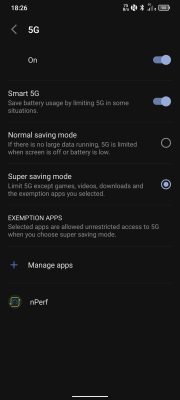
It’s not really a dealbreaker unless you’re connecting to a network really high speeds, but since I’ve been lucky enough to get BT’s 900Mbps home broadband service, I did notice the deficit quite markedly.
If Qualcomm had included Wi-Fi 6 support for the SD750G chip, the connection speed would rise to 1200Mbps, or even 2400Mbps, but this isn’t likely to be a problem for most people.
However, if you want to use the phone as a portable hotspot, keep in mind the limitations of the Wi-Fi speed as this could artificially reduce the speed you can share out to other devices, compared to what the phone itself can manage itself.
One feature that I’d love to see replicated elsewhere is the enhanced Smart 5G mode. Many phones offer Smart 5G as an on/off toggle, whereby 5G will only be utilised if there’s a heavy demand for data (a speed test or file download), but TCL offers additional choices that can let you select individual apps that can ‘call for’ 5G use.
This helps reduce power consumption by only using 5G at certain times.
One thing I experienced here was phone apps not detecting a 5G connection. The way phones can show 5G even if you’re not actually using it is something that can, rightly, confuse users – but the phone (or more accurately, the apps) should know when it is being used!
As you can see from the speed tests below using nPerf.com, the TCL is definitely using 5G. It actually managed to beat a Snapdragon 888 phone tested at the same location and on the same network!
Even with Smart 5G off, nPerf, Speedtest, and any other network tool thinks you’re using 4G only.
I suspect this is a bug TCL needs to fix, but given 5G clearly does work, and it does show on the signal meter, most of you can sleep easy knowing the phone is not short-changing you.

Xiaomi Mi 11 (Snapdragon 888) on EE 5G 
TCL 20 Pro 5G (Snapdragon 750G) on EE 5G
When it comes to the battery life itself, despite not having the fastest charging speeds, the phone does last very well.
The 4,500mAh battery and a range of power management options makes it possible to easily get a whole day of usage, as well as enjoying over five hours of screen-on time. I would advise limiting the screen brightness if you’re going to be out in sunlight a lot, as that can impact quite a bit. Fortunately, you can enable a basic power saving mode to cap it at around 70-75% brightness. It makes a lot of difference, at the expense of readability in some places.

Conclusion
Overall, the TCL 20 5G Pro is an impressive phone from a company that still has a bit of work ahead of it to fully establish itself in the market, as it competes with an ever-growing number of brands targeting customers wanting to spend £600 or less on a phone that must still perform well in multiple categories.
With the phone available only from Argos or JDWilliams, it’s unfortunate that without more marketing, there’s a good chance many people might never even learn of its existence, or indeed the other TCL 20-series phones that were launched alongside this one.
I did also find the phone on Amazon, but it isn’t available from Amazon direct or with Prime delivery, which is something the company needs to look at because it wasn’t clear who exactly was selling the phone, or when it would actually be delivered if I had placed an order. That said, it was £10 cheaper (at the time of publishing this review).
Not that much of that matters if you’ve read this review, as you are now fully aware of what the phone is, and why it performs extremely well and stands up well against its peers.
It’s definitely a phone to put on a shortlist, and I hope TCL can work on bringing its phones to a wider audience in the future so future models won’t almost slip by unnoticed.
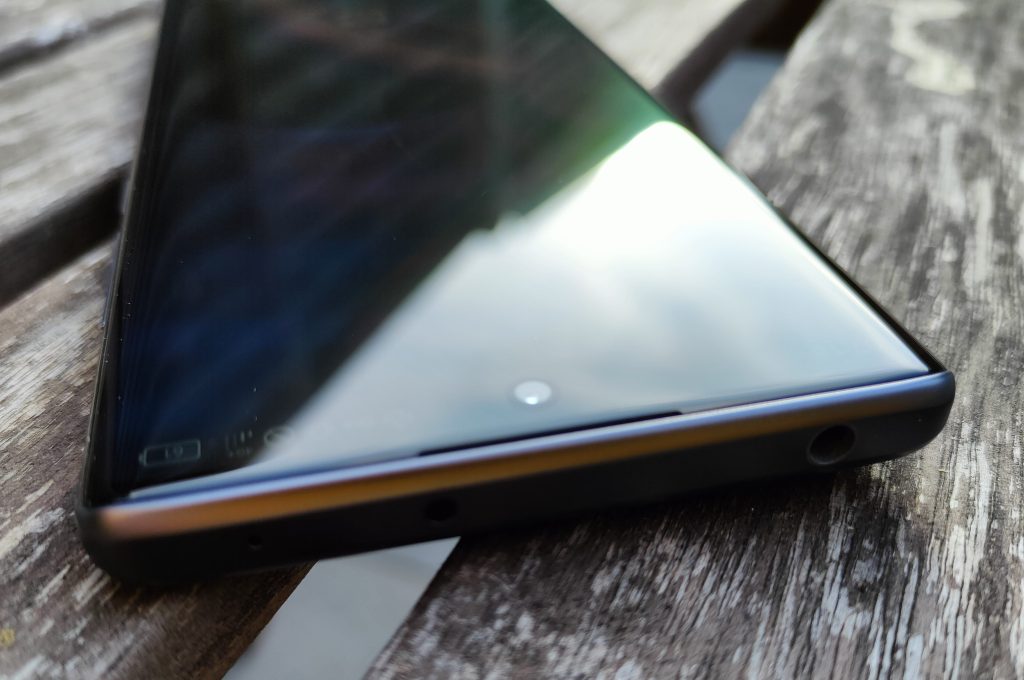
Key Specifications
| TCL 20 Pro 5G | |
|---|---|
| Size/Weight | 164.2 x 73 x 8.8mm / 190g |
| Screen | 6.67-inch AMOLED FHD+ 1080×2400 pixels 60Hz refresh rate In-display fingerprint sensor |
| Audio | Mono sound |
| Chipset | Qualcomm Snapdragon 750G (8nm) Adreno 619 GPU |
| RAM | 6GB |
| OS | Android 11 – TCL UI |
| Storage | 256GB (with microSDXC expansion) |
| Camera (front) | Punch-hole 32MP f/2.5 Video: 4K/30 |
| Camera (rear) | Primary: Sony IMX582 48MP f/1.8 with OIS Ultra-wide: 16MP f/2.4 Depth: 2MP Macro: 2MP Dual LED flash Video: 4K/30 (1080/30fps only with EIS) |
| Connectivity | Dual band Wi-Fi 5 1×1 MIMO 5G with VoLTE, ViLTE and VoWiFi Bluetooth 5.1 NFC USB-C |
| Battery | 4,500mAh 18W Wired Charging 15W Qi Wireless Charging |
| Other | Dual-SIM Customisable shortcut button Clear protective case IR blaster |

Pricing and Availability
The TCL 20 Pro 5G is available from the following retailers, as well as Amazon, in Moondust Grey.



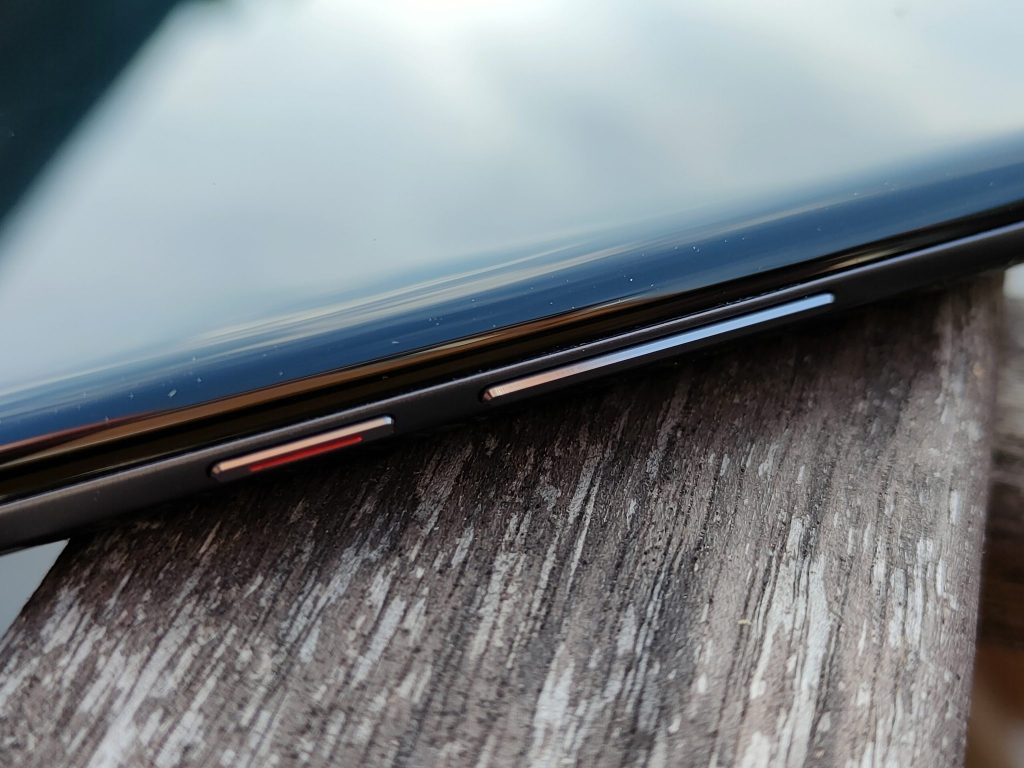













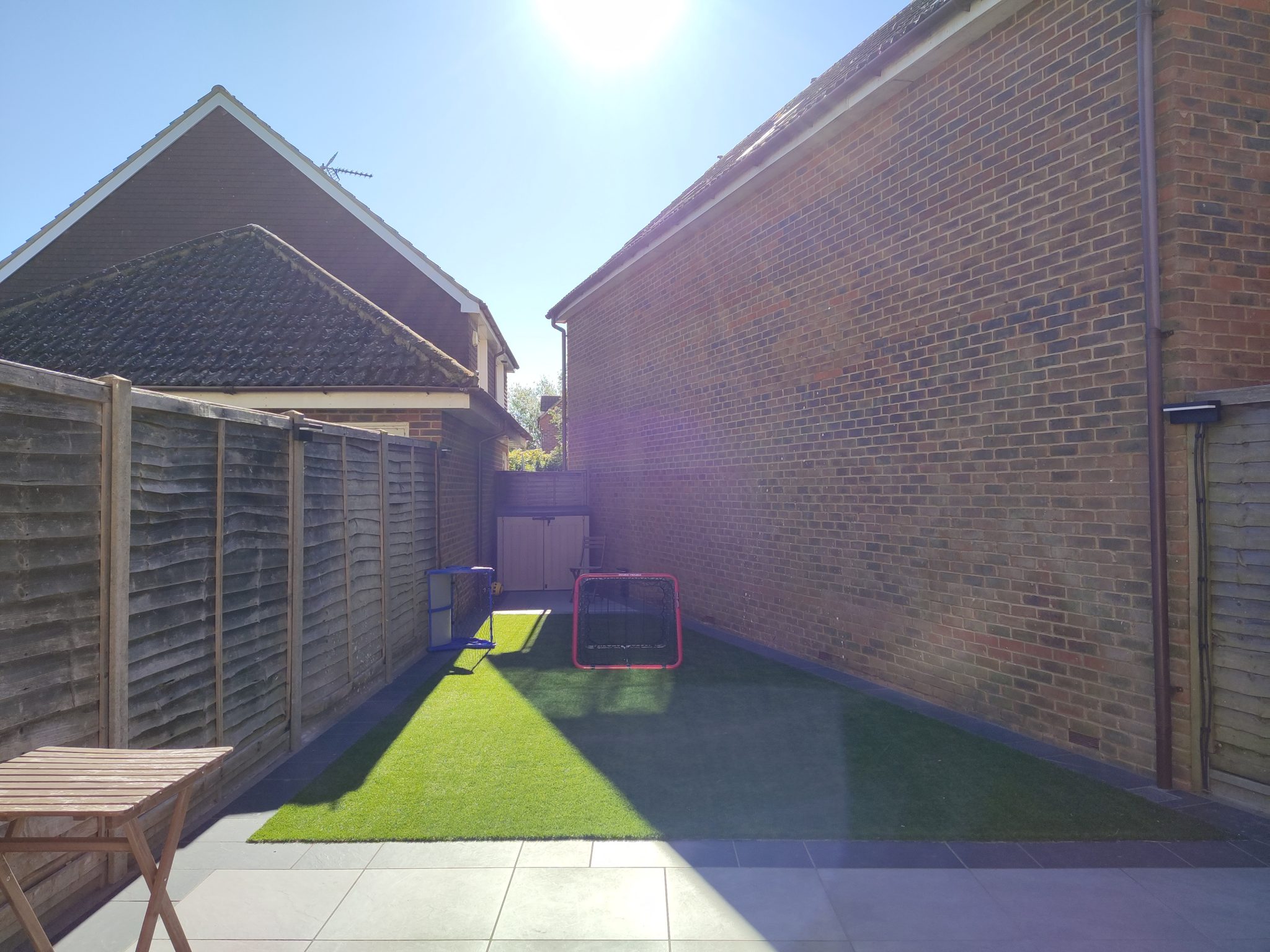





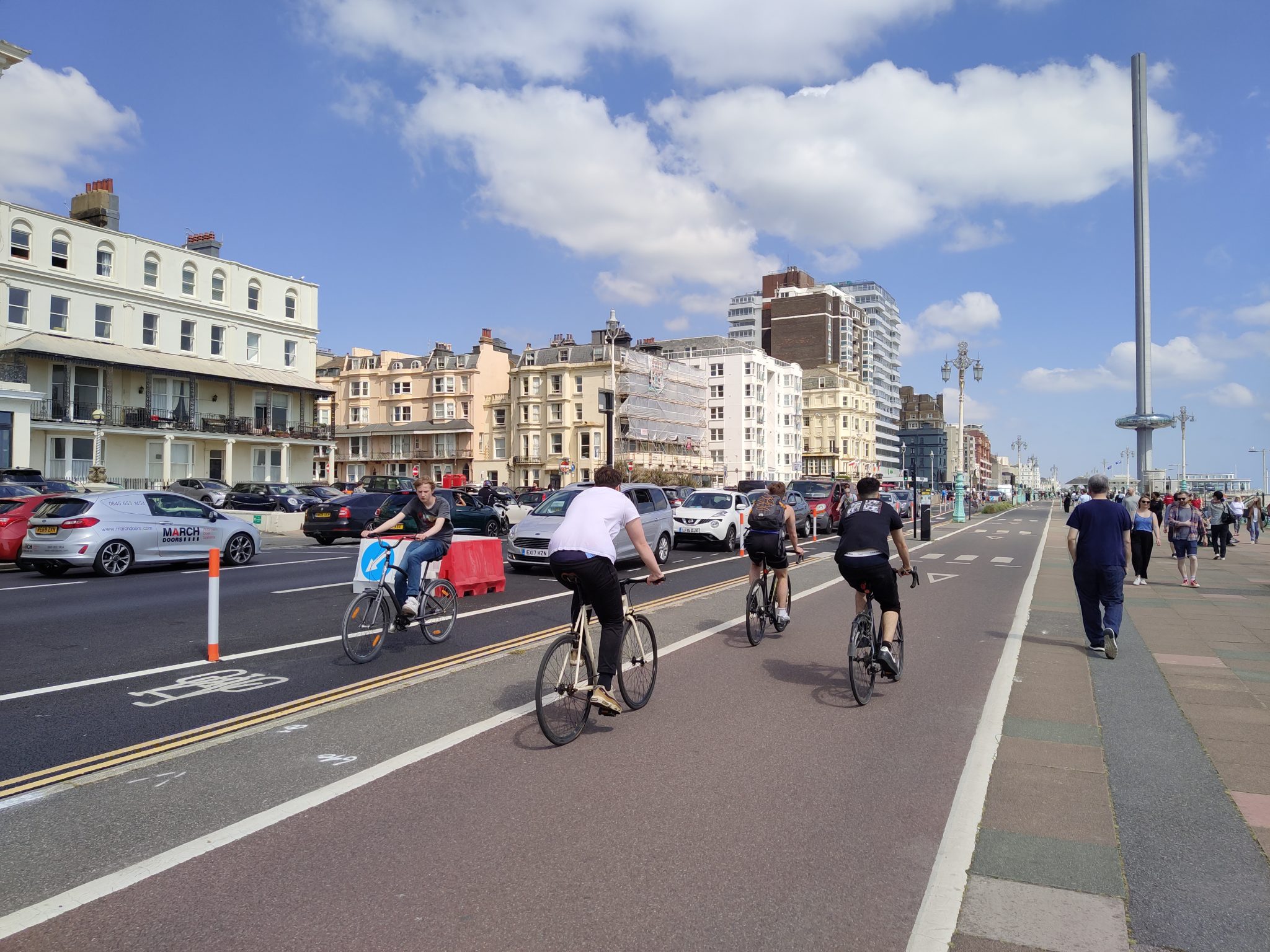
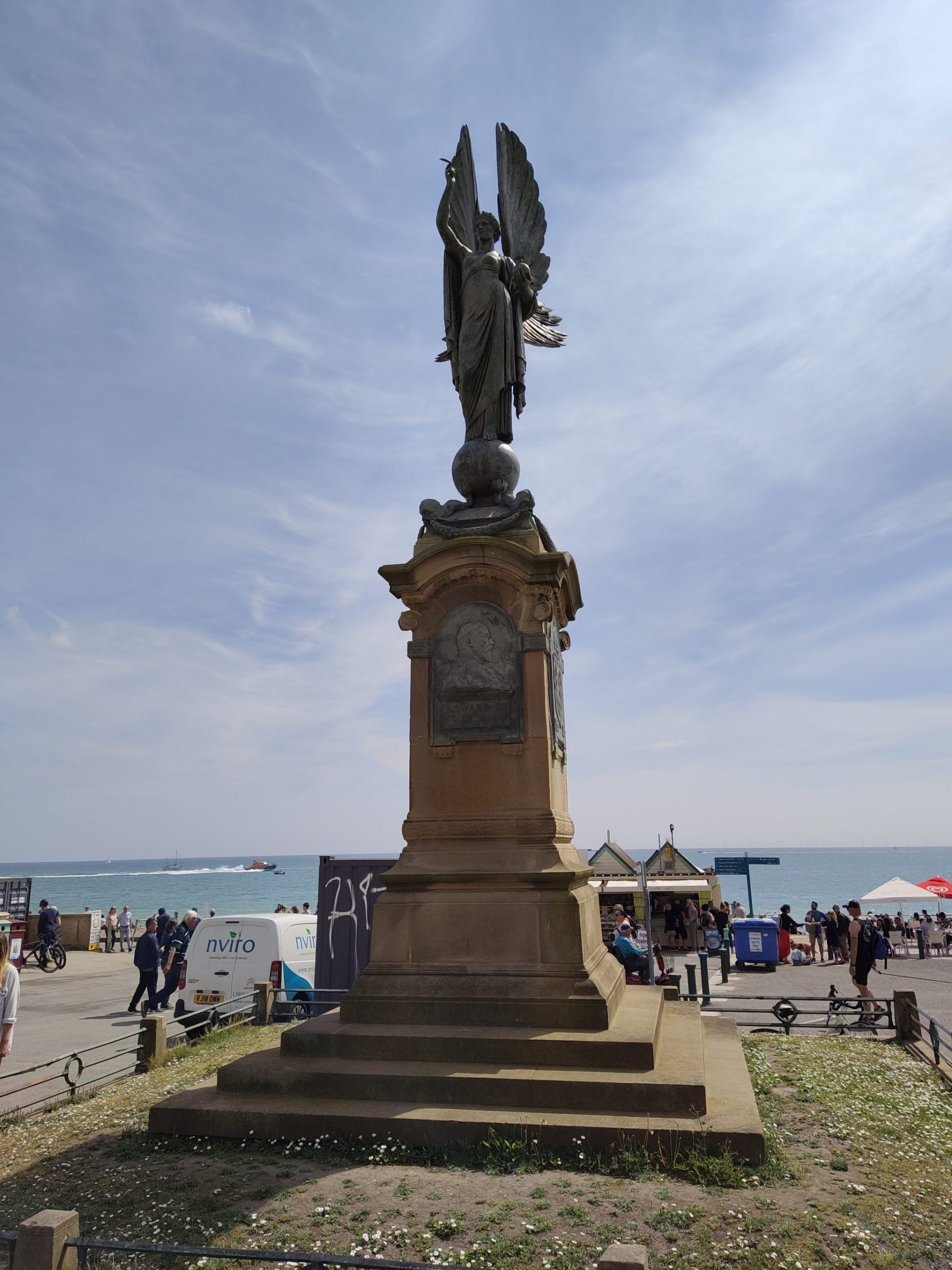















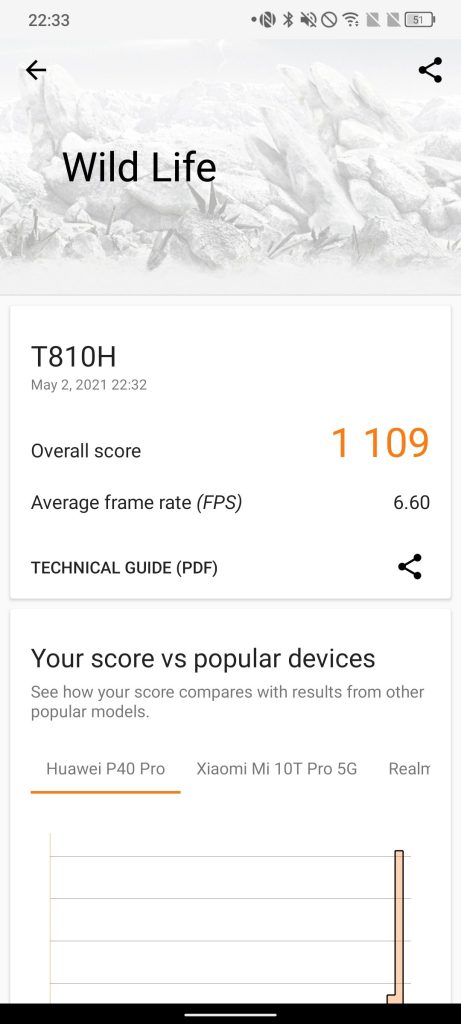



One thought on “TCL 20 Pro 5G Review: If future phones are built like this, TCL has a bright future in the market”